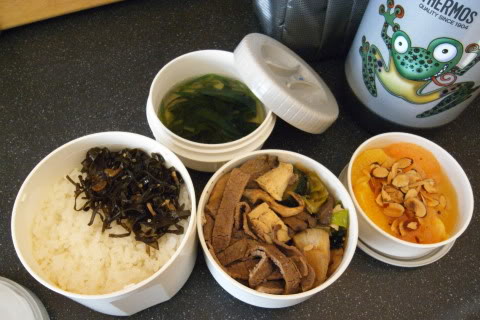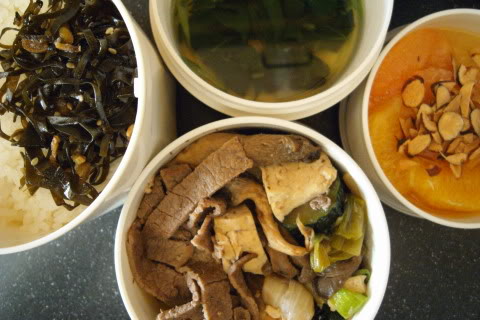DampCharcoal
Executive Chef
I totally derailed there, sorry. 
I really like your bento box thread. I read it, have never done it.
If this link is a repeat please just ignore it. This website has some beautiful bento boxes, I thought some of you may enjoy.
Bento pictures - Bento photo gallery
I love looking at the pictures and trying to think up what kind of things might work for me. I think I need a hot and cold bento box, as I feel more satisfied with hot and cold food for a meal.
The more I look into it, the more I like it!
I need a dietary lifestyle change and that might be the way to go.
My issue is that I like to eat (obviously) and I also like grains and cheese.
I think I could get used to a structured meal plan which tastes good and is satisfying but I'm guessing that's as elusive as an FDA approved magical weight loss pill.
Anywho, a successful diet is more mind-over-matter more than anything else.
I'm still working up the brain power.


My one gripe with sukiyaki in a bento box is that I like to dip my pot pickings into raw egg. Which would be like, for lunch, loading each chamber with a live slug.
No sauce, Fifi-chan. Mine also has no garlic or ginger.
Sukiyaki, meaning to cook whatever you like, is a simmering communal pot. The ideal appliance is a deep, tabletop electric skillet. There are many rituals, do's and don'ts, about it. I have none. The broth in which everything simmers is classic Japanese: dashi, soy, mirin, sugar, sake. Proportions vary with household; mine is roughly 10:5:5:2:1, which I like to cook together briefly in a sauce pan in advance. A good place to start is 2:1:1 with sugar & sake to taste. In addition to a decanter of that broth, I keep some water, soy sauce and sugar handy tableside to adjust the pot's taste as the dinner night progresses. The only commonality of what goes into the pot are that they be cut to be easily retrieved with chopsticks and that they cook in a broth relatively quickly which is why the beef should be the thinnest possible cut, to the point where its muscle cells contract and curl with the application of heat.
My one gripe with sukiyaki in a bento box is that I like to dip my pot pickings into raw egg. Which would be like, for lunch, loading each chamber with a live slug.
There are two camps of sukiyaki eaters, bliss -- those who dip or don't in raw egg. Pick whatever you want from the pot, dip in a transitional bowl of beaten egg, then eat. My live slug reference is two-fold: a raw egg is slimy, and eating raw egg is an exercise in Russian Roulette. But a raw egg in a lunch box is like loading a roulette gun that does not have blanks in all but one chamber, each is live.How does the raw egg work. You dip it in before you cook it?
What would make it like a live slug? Just wondering.
One of the sukiyaki rituals is that the broth is reserved for mom, who pours a spoonful on top of her bowl of rice to eat and announce dinner's end. The leftovers refrigerate well for a day, but start to look gross much longer.Thank you for the description and the formula. This should go into my Mr. Bento with the thermal cup. That must be some killer broth after all the bits are eaten!
One of the sukiyaki rituals is that the broth is reserved for mom, who pours a spoonful on top of her bowl of rice to eat and announce dinner's end. The leftovers refrigerate well for a day, but start to look gross much longer.
